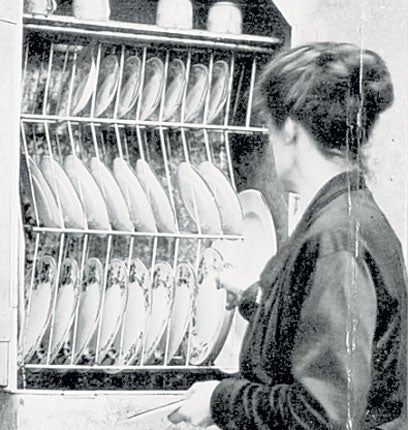The Secret History Of: The dishwasher

Your support helps us to tell the story
From reproductive rights to climate change to Big Tech, The Independent is on the ground when the story is developing. Whether it's investigating the financials of Elon Musk's pro-Trump PAC or producing our latest documentary, 'The A Word', which shines a light on the American women fighting for reproductive rights, we know how important it is to parse out the facts from the messaging.
At such a critical moment in US history, we need reporters on the ground. Your donation allows us to keep sending journalists to speak to both sides of the story.
The Independent is trusted by Americans across the entire political spectrum. And unlike many other quality news outlets, we choose not to lock Americans out of our reporting and analysis with paywalls. We believe quality journalism should be available to everyone, paid for by those who can afford it.
Your support makes all the difference.Having John Fitch, the inventor of the steamboat, as her grandfather meant two things for Josephine Cochrane. First, she had engineering in her blood and, second, she was pretty well-heeled. So when all that expensive crockery kept getting broken by her servants, there was only one thing for it – invent a machine to do it better. And so, in 1886, the dishwasher was born.
Actually, that's not strictly true. The first recorded evidence of a dishwasher dates back to 1850 when a crude hand-turned splashing device attached to a wooden tub, made by Joel Houghton, was given a patent. It wasn't much cop, however, and even L A Alexander's development on this idea – adding gears to a spinning rack so that it could hold dishes, which could then be spun inside a wooden tub of water – wasn't much of an improvement.
Josephine's contraption, however, was in a different league. She built the first automatic dishwasher, a wooden wheel lying flat in a copper boiler. The wheel could be turned by hand or driven by a power source via a pully. Wire-framed compartments, made to fit her dishes, were attached and the marriage of it spinning and soapy hot water showered on the crockery was made in heaven.
When she unveiled it at the 1893 Worlds' Fair in Chicago, hotel and restaurant owners couldn't believe their luck. Nor could her wealthy friends. Duly, she opened up a production factory, which later became the appliance giant KitchenAid.
It wasn't until the 1920s, when permanent plumbing was introduced, that companies including Miele made their entrance. "In 1929, we launched Europe's first electric top-loading dishwasher ready for series production," says Neil Pooley, Miele's group product manager. "The invention, was wildly exciting but doomed – the stock market crash meant there was no way people were going to spend on something like this."
Then more bad luck – the Second World War broke out. But in between designing chemical warfare, inventor William Howard Livens squeezed in time to create the dishwasher as we know it – that is, front-loading – with a drying element introduced in 1940. When Miele introduced the first automated model in 1960, it was still costly – as much as a housekeeper's annual salary, in fact.
Yet the concept stood the test of time and by the end of the 1970s, the dishwasher had become one of the most common home appliances."
Join our commenting forum
Join thought-provoking conversations, follow other Independent readers and see their replies
Comments